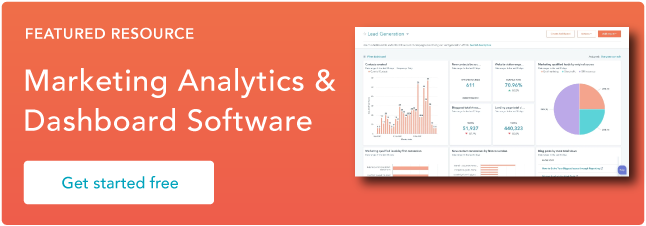Single Source of Truth: Benefits, Challenges, & Examples
Businesses strive to build an automated and efficient system for serving customers, and this vision is often described as a “well-oiled machine.” Consider a similar metaphor for describing a single source of truth philosophy: an all-wheel-drive vehicle.


In all-wheel-drive cars, a central computer tracks how the tires are gripping the road. If the computer detects a loss of traction in one tire, it can allocate more power to the other axle to compensate and ensure the vehicle continues in the desired direction. It draws this conclusion based on analyzing performance metrics from the tires to draw conclusions and respond to changing conditions.
This data also feeds into other systems, such as the RPM and miles per gallon metrics that display on the dashboard for the driver. This information helps the driver better inform their decisions on when to take action, such as filling up the gas tank.
Organizations turn to this single source of truth principle to achieve the same outcome: funneling their data into one location so information can be distributed as needed and drive their business strategy. Let’s define this concept before continuing.
What is a single source of truth?
Single source of truth (SSOT) is a philosophy for collecting data from across the enterprise and aggregating it into a central repository.
.png?width=650&name=Single%20Source%20of%20Truth%20(V4).png)
Image Source
As organizations grow, it’s common that data relevant to individual pieces of the business will live in the specific applications and systems used to drive these operations. This is a natural outcome, but data also informs decisions made outside of the teams that generate this information.
For example, data on followers for a company’s social media accounts can help email marketers identify new audience segments to target and also helps sales teams understand customers’ backgrounds to better solve their pain points. However, follower data is not available in the usual datasets stored by email distribution or sales enablement platforms.
In summary, subpar data leads to subpar decisions. This is why companies are adopting SSOT approaches to achieve a comprehensive view of their customers’ needs and the impact of business activities.
This video provides a second examination of the SSOT principle and how it’s applied in the design of a mobile application:
Single Source of Truth Benefits
When organizations align their data strategy with an SSOT philosophy, it provides multiple benefits for the enterprise and individual employees.
Build a complete view of business performance.
Only by combining financial, customer, marketing, sales, and IT data together can an organization measure how the individual business units are contributing to the overall mission. This allows leadership to track progress toward goals and use historical context to predict future growth and trends.
Break down data silos.
When data is only accessible to individual business units, it exists in a data silo. However, this data can inform decisions outside of the team that it’s most relevant to. Implementing SSOT principles allows an organization to act with the confidence that it has not overlooked a dependency or trend when making a shift in strategy.
Eliminate duplicate data.
Without a SSOT, separate teams may track the same information without even realizing it. SSOT removes the risk of duplicate data for more efficient use of storage resources while still ensuring both groups have access to this information. This integration of data also prevents teams from drawing different conclusions if one dataset is more recent or more complete than the other, which improves data quality.
Increase transparency.
SSOT provides greater access to company-wide metrics on corporate social responsibility and other data points that employees value. Employees are also able to see how their individual efforts contribute to larger company goals, promoting job satisfaction and fulfillment. Dashboards and visualizations help communicate this data with team members.
Increase productivity.
With an SSOT approach, team members no longer have to pull data from multiple sources to build reports. Analysts and stakeholders spend less time collecting data and more time finding new insights and drawing conclusions.
Support new strategies with data.
The entire enterprise can act with greater confidence when all data has been accounted for in a central data warehouse or other datastore. Employees at all levels can now propose new strategies and support their ideas with historical and real-time data, increasing innovation and agile thinking.
Depending on your organization’s application of SSOT, you may find even more benefits than the ones described above. Next, let’s examine some common challenges that come with a shift to SSOT principles.
Challenges for Single Source of Truth Adoption
The SSOT philosophy has many benefits, but a large shift in strategy brings challenges that should be accounted for to ensure successful adoption.
Leadership and Employee Buy-In
The first step in any major project is to ensure you have approval from the appropriate stakeholders. In the case of a mass shift in data management — like SSOT — buy-in needs to come from the business’s leadership given the amount of time, effort, and money needed to catalog all sources of data and consolidate them.
It’s also important to keep the entire team in the loop on the migration timetable. Without clear communication as to the importance and benefits of this shift in strategy, employees may feel confused or alienated as their workflows change without understanding why, and productivity may suffer.
High-Quality Data
It’s one thing to collect all data within an enterprise. But it will be much more valuable long term if you implement rules around data quality. Ensuring that your organization’s data follows agreed-upon standards will reduce confusion and speed analysis. Plus, employees will feel more confident in their conclusions knowing that the data they are seeing has been cleansed and validated to meet company standards.
Evaluation Standards
SSOT creates a universal datastore for all your company’s information. But it would also be wise to establish a set of standards for evaluating and analyzing this data so that two reports from the same dataset don’t draw wildly different conclusions.
Of course, you don’t want to stifle innovation, either, but predetermined reporting standards for revenue and other company-wide metrics will ensure that progress toward goals is tracked consistently and transparently.
Data Privacy
Collecting data into one location will remove blind spots in decision making. However, you don’t want everyone to have access to all the data your organization has. Instead, implement access rules based on roles and permissions to limit sensitive information to those whose roles require it.
For example, an HR professional may have access to employees’ Social Security numbers and other personally identifiable information, but a business executive should not. Role-based permissions also help your organization comply with data privacy regulations.
Accessibility
Now that your data’s centralized following the SSOT philosophy, take the necessary steps to ensure anyone can access it, not just data scientists and engineers. Offering self-service tools to build dashboards and visualizations will allow employees to feel a sense of ownership and stay engaged with progress toward goals within their teams or across the organization. Accessibility is key to the democratization of data.
The next section will examine different business examples of SSOT in action.
Single Source of Truth Examples
Now that you understand the challenges of a SSOT philosophy, let’s examine some use cases from successful adoptions of this principle.
-1.png?width=650&name=Single%20Source%20of%20Truth%20(V4)-1.png)
Image Source
1. Software Development
In tightly coupled agile or DevOps software development teams, a SSOT is critical for ensuring the team is on the same page for the status of sprints and next steps. These teams use multiple tools for each phase of delivery, and implementing one place to store data around requirements, task completion, bugs, and more will speed the development lifecycle.
In addition, this data will be useful for evaluating similar projects in the future to predict completion time and potential bugs, which will help the development team proactively avoid roadblocks.
2. Regulatory Compliance
Consolidating data under SSOT allows organizations to maintain oversight of all their data to comply with regulations such as HIPAA or GDPR. SSOT simplifies the audit process since the data is all available in one central repository. It is also easier for organizations to update their data management strategies to comply with future mandates when the data is stored under one roof in a common format.
3. Search Engines
Search engines are built around the SSOT philosophy. Google takes your search phrase and browses all available web pages, images, videos, and other media to deliver the most relevant results. Google would not be able to adequately meet your needs if it did not have all these resources cataloged in a central database to query at any given moment.
Google is a common example, but search engines don’t need to be specific to the internet. Organizations have also built search applications that allow employees to query their central datastore with simple phrases and review the results.
This video discusses the principles of SSOT and how they are applied in another SSOT use case, a document lifecycle strategy:
Build a single source of truth to improve insights.
The first step to solving a problem is to agree on what the problem is. Once that is established, the path to remediating the issue is much clearer. A single source of truth approach to data helps organizations establish the common ground for evaluating obstacles to business success and tracking progress on solutions.
In addition, a SSOT philosophy provides unified data for tracking performance metrics such as revenue numbers, deals booked, and more. Subpar data leads to subpar decisions. Ensure your organization moves in the right direction with SSOT.












